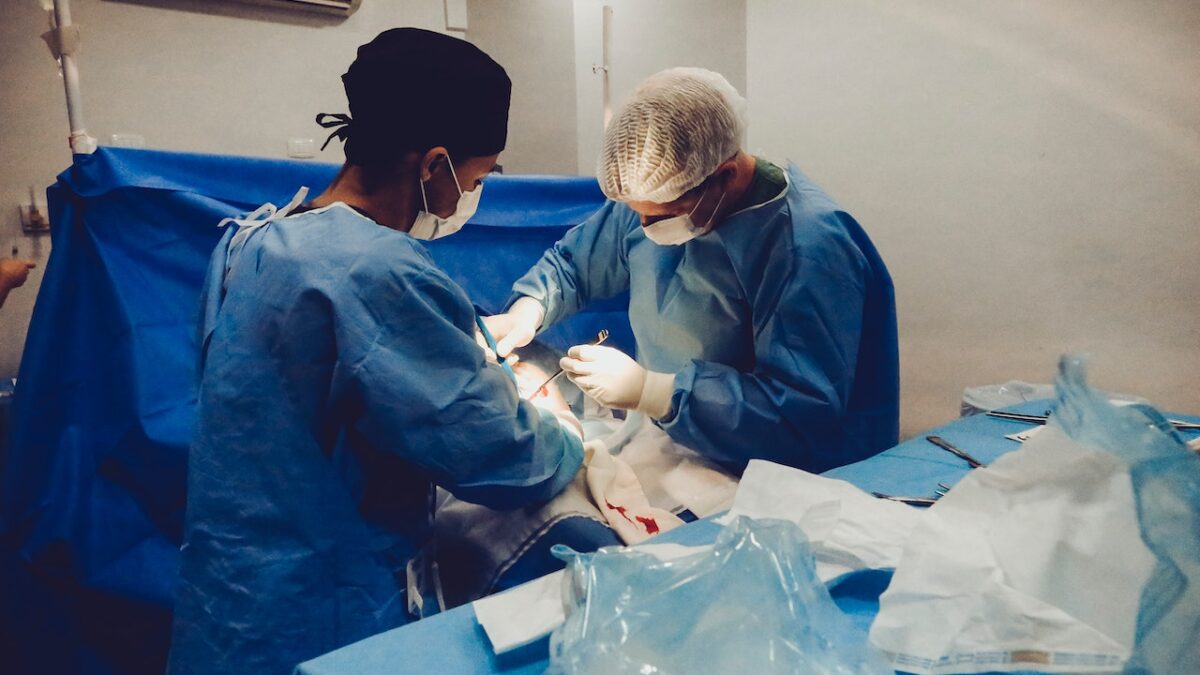The risk in any grim line of work is that you get used to it — that true horrors cease to appear horrible. I assume the folks who clean up crime scenes and conduct autopsies get used to their work. Otherwise, they’d crack.
I spend my days studying a new line of business called “gender-affirming care.” That’s a euphemism for the current craze of treating teenagers who struggle with gender dysphoria. In response, doctors who practice “gender-affirming care” try to drug and cut these young bodies to fit their self-diagnosed internal sense of gender. This internal sense is called “gender identity.” Don’t ask for a better explanation. There isn’t one.
I’m so used to reading about “top surgeries,” “bottom surgeries,” and sterilized teenagers that I fear I’m growing jaded. Honestly, that’s a risk. But even I wasn’t prepared for the report on the “sex reassignment surgery” market just released by Grand View Research.
The U.S. market for such surgeries, we are told, “was valued at USD 1.9 billion in 2021 and is expected to expand at a compound annual growth rate (CAGR) of 11.23% from 2022 to 2030.” At that rate, the market revenue will grow to $5 billion at the end of this decade. Business is booming because of “rising incidences of gender dysphoria and the increasing number of people opting for gender confirmation surgeries.”
The report offers no commentary or explanation for this surprising fact.
The report goes on to repeat the common claims of gender ideologues, about how these surgeries “help” people with gender dysphoria — a claim for which there’s no good evidence. But they’re just repeating ad copy. Grand View’s expertise is in market analysis.
Apparently, the market for these surgeries had slowed a bit during the Covid-19 lockdowns, with unemployment and lack of disposable income among would-be customers. But the “good news” is that the market is heating up again, in part because of an “improving reimbursement scenario.” That’s market-forecast speak for the fact that insurers such as “Aetna and Unicare provide insurance for necessary surgical procedures, such as salpingo-oophorectomy, hysterectomy, orchiectomy, or ovariectomy.”
It’s a stretch to call the removal of healthy penises, ovaries, testicles, fallopian tubes, and uteruses “necessary.” But in cutting-edge medicine, I presume one must expect some stretching of semantics.
And then there are the Medicaid dollars. “In the U.S.,” the report notes, “around 152,000 transgender individuals are enrolled in Medicaid and only 69,000 among them have access to gender-affirming care coverage under state law.”
That hinders growth in this market segment. But how long can such hold-out states resist joining the right side of history? And how long can they hold out against the “government support” which “is also driving the market”?
For now at least, the market cleaves into just two segments: males who want to look like females (male-to-female) and females who want to look like males (female-to-male). The latter segment dominated in 2021 and is projected to do so for the foreseeable future. Why? Because of “continuous innovations in metoidioplasty, phalloplasty, scrotoplasty, and chest reconstructing surgeries.” That is, new and improved versions of fake penises and scrotums for women born without them.
This is hardly where we want the American economy to demonstrate its innovative potential.
Indeed, if anything, the report underplays the ghoulish revenue potential for these procedures, since it fails to mention the complications. Simply cutting out a uterus, or cutting off a penis, may only generate revenue once. These tend to be one-and-done operations. But constructing a simulacrum of a penis and attaching it to a woman involves the rerouting of blood vessels, skin, urethra, and nerves. This is far from simple. The initial surgery can take many hours. The follow-up for complications, infections, and maintenance can stretch out for years.
Consider this testimony from just one such patient, Scott Newgent:
During my own transition, I had seven surgeries. I also had a massive pulmonary embolism, a helicopter life-flight ride, an emergency ambulance ride, a stress-induced heart attack, sepsis, a 17-month recurring infection due to using the wrong skin during a (failed) phalloplasty, 16 rounds of antibiotics, three weeks of daily IV antibiotics, the loss of all my hair, (only partially successful) arm reconstructive surgery, permanent lung and heart damage, a cut bladder, insomnia-induced hallucinations—oh and frequent loss of consciousness due to pain from the hair on the inside of my urethra. All this led to a form of PTSD that made me a prisoner in my apartment for a year. Between me and my insurance company, medical expenses exceeded $900,000.
From Newgent’s perspective, all this was no doubt … unpleasant. But given the tone of the report, I’m surprised Grand View Research missed the chance to point investors toward this serious, long-term, payola prospect.
And this is to say nothing of the life-long need for cross-sex hormones. You see, even after a woman has had her breasts, uterus, and fallopian tubes removed, and the skin, nerves, and muscle from her forearm stripped and refashioned in a neo-penis, every cell of her body is going to go right on thinking it’s female. That’s hard on the patient, but if she lives to be 70 or 80, can you imagine the revenue from exogenous testosterone alone? How did this financial research firm miss this part of the story?
But even as it is, this clinical market analysis applied to teenage castration and sterilization is deeply disturbing. The challenge of the present moment is to wake up millions of Americans who are only vaguely aware of these horrors, and then to channel their shock and outrage into actions that will end them once and for all — and to do that before they, before we, grow jaded and complacent.









